Facelifts: Where Are They Done?
Facelift is a standard plastic surgery procedure that can be done at a hospital or in a clinic. It can be done with you fully asleep or under sedation.
We perform our facelifts in our clinic which is actually a fully certified operating room facility (a mini hospital) and we perform facelifts under both general and IV sedation, depending on each patient’s situation.
In our situation, going to our hospital (Humber Hospital) is not ideal because in a hospital setting I do not control which anesthetist works with me, which nurses are looking after the patient, and the instruments are general, not ideal for a facelift.
At my clinic I fully control the environment which allows me to provide a safer and more efficient setting. Our results are better, risk of complications is lower in a private setting. (Martin Jugenburg, MD, Toronto Plastic Surgeon)

A Facelift Can Be Performed In Our Office Under Local Anesthesia
Most facelifts are done in either an office base surgical facility or an outpatient ambulatory surgery center.
They are seldom done at hospitals because of the prohibitive costs involved in having cosmetic surgery done in a hospital setting. (Jose Perez-Gurri, MD, FACS, Miami Plastic Surgeon)
A full facelift should probably be performed in an accredited outpatient surgery center.
Operations within a hospital proper have a slightly higher infection rate because of the no you. A properly accredited ambulatory surgery center guarantees at the credentials of all professionals are in order and certain standards of care are met. (Vincent N. Zubowicz, MD, Atlanta Plastic Surgeon)
I recommend that you find a board certified plastic Surgeon and dicuss these options at your consultation. (Jerome Edelstein, MD, Toronto Plastic Surgeon)
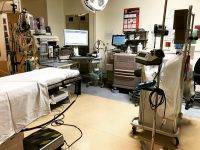
A Full Surgical Facility
It Depends on How Healthy You Are
Facelifts can be done in any of those settings. I do most facelifts in the office using local anesthesia with mild oral sedation. Patients are awake, and in most cases, this makes the procedure easier to perform.
The beauty of doing it this way is that there are none of the issues associated with general anesthesia — nausea, increased bleeding, and blood pressure issues. Your recovery is also much easier. In order to do the procedure in this fashion, the patient must be healthy.
If there are any medical issues, then I prefer to do the procedure in the hospital using either local anesthesia with sedation or general anesthesia. (Louis C. Cutolo, Jr., MD, FACS, New York Plastic Surgeon)
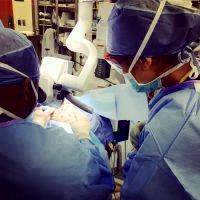
A Traditional Lower Facelift Is Done In The Operating Room
Facelift options hospital clinic
Facelifts are done in both places about equally. Choose a surgeon that you think has good experience and with whom you feel you can work comfortably and make certain you discuss the pros and cons of each.
I prefer to work in a hospital. It is nearby, very personal and is staffed with highly-trained personnel. But office-based surgical facilities have similar benefits. (J. Howell Tiller, MD, Miami Beach Plastic Surgeon)
Office based surgery is a good choice
It is important to have surgery with a surgeon whom you trust and with his or her regular team of nurses and assistants, and familiar space, equipment & instruments. If that is the hospital, then that is the biggest advantage.
However, Having your surgery in a hospital may be more expensive, puts you at risk for getting delayed by trauma/ emergencies and other inefficiencies, potential exposure to antibiotic resistant infections sometimes seen in hospitalized patients.
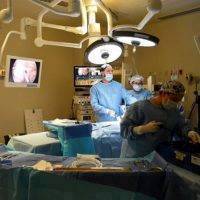
An In-office Facelift Is 1-3 Of The Cost Of A Regular Facelift
The office OR that is fully certified, equipped and properly staffed is just as safe, and may be an advantage as the entire office and staff specialize in cosmetic surgery and will likely see you through preop consultation, to the procedure, and postoperative visits-continuity of care with the same staff is always an advantage. (Vaishali B. Doolabh, MD, FACS, Jacksonville Plastic Surgeon)
The Lite Lift if there’s a modified face lift that can be done in our office under local anesthetic. Lite Lift has shorter incisions, it’s less invasive, and has a much quicker recovery time.
Our best candidates are those patients, which typically are in their late 30s to 60s, that is those patients with good elasticity of their skin. Typically we always use outpatient surgery centers. (Jed H. Horowitz, MD, FACS, Orange County Plastic Surgeon)

Facelift In Operating Room Before And After
A full facelift, including eyelids and neck repair can be safely performed on healthy individuals in an office-based surgery or ambulatory surgery center. The location for surgery depends on several factors, first, is your health and what type of procedure is planned, including type of anesthesia.
Second, make certain that the office facility is accredited by an inspecting agency such as Quad A-SF. Finally, inquire about your prospective surgeon’s experience in performing rhytidectomy. The combination of prudent patient, prudent surgeon and prudent surgical planning gives the patient the best possibility of an excellent, safe outcome. (Mark L. Jewell, MD, Eugene Plastic Surgeon)
Facelifts are performed in many locations, accredited facilities and board-certified plastic surgeon’s will help you rest that you have chosen the safest option. Typically if the surgery is going to be done in the hospital that has to do more with the health and other medical problems that the patient may have.

Facelift Under Local Anesthesia
If you were surgeon advises you to have it there is likely in your best interest to do so. (Mark T. Boschert, MD, Saint Louis Plastic Surgeon)
Where to undergo facelift surgery?
A full facelift is typically performed in a certified ambulatory surgical center or hospital under monitored sedation or general anesthesia, depending on patient and/ or doctor preference. All of our procedures are performed in our on site ambulatory surgical center which patients like due to anonymity, a more comfortable environment for patients and the fact that we have the same team of nurses, surgical technician and anesthesiologist working together day in and day out. (Paul M. Parker, MD, FACS, Paramus Plastic Surgeon)
Facelift in an accredited surgical facility
Many plastic surgeons have an accredited surgical facility as part of their office or in the same building. Advantages of this type of facility include greater privacy, a dedicated team with a focus on the type of procedure you are having, and less exposure to sick patients.

Facelift Without General Anesthesia Or Intravenous Sedation
A qualified anesthesia provider can be a Certified Registered Nurse Anesthetist (CRNA) or an anesthesiologist. (Richard Baxter, MD, Seattle Plastic Surgeon)
Preferred location for Facelift surgery
Face lift surgery can be performed in either a hospital or a clinic depending on the patients preference and the type of anesthesia used however my recommendation is that where possible Face lift surgery can be carried out under Local anaesthetic in a clinic environment, ensuring that the clinic is equipped with appropriate ventilation and clinical controls to ensure patient safety. (Amir Nakhdjevani, MBBS, MRCS, FRCS (Plast), London Plastic Surgeon)
Most procedures like this are performed in in-office surgical suites. Make sure it is state approved and licensed. (William J. Welsh, MD, Nebo Plastic Surgeon)
I do all my facelifts in my office surgery. Unless there are special health issues, it has provided a safe environment for over 15 years. It really depends on the surgeon though. You should do it where THEY feel most comfortable. (Robert H. Hunsaker, MD, Miami Plastic Surgeon)

Facial Rejuvenation Without The Cost Of A Full Surgical Facelift
Safest place for facelift surgery
Many surgeons may find this difficult to answer because they may have a bias due to ownership in a surgery center or in-office facility. My answer is that there are two essential components: an accredited surgical facility and the presence of a board – certified anesthesiologist (not a nurse anesthetist or PA).
I personally prefer hospitals for all significant surgery such as thisThe difficult in face lifting comes when an emergency occurs such as a heart attack or more commonly, when the neck is “opened” to have a neck lift done.
If a physician gets into airway issues or bleeding issues in the neck, this is where the situation can turn. Having an accredited facility ensures the appropriate equipment is present and usable. Having the right anesthesiologist ensures that someone knows what to do if and when things go south.
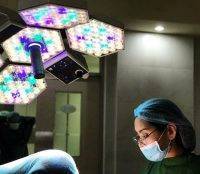
Full Facelift Is Done Under General Anesthesia
Finally, if you are not in a hospital and an emergency occurs, the staff will dial 911 in order to have you transferred to a real hospital. Make sure your surgeon is on staff at the least at a real hospital.
This ensures they have the correct privileges to do this procedure and can admit you if needed. (Samer W. Cabbabe, MD, FACS, Saint Louis Plastic Surgeon)
I am planning on having a full facelift in the near future. Are such procedures typically done in office or hospital/clinic?
I agree that your surgeon is the most important factor. However I prefer to perform a full face and neck lift in a hospital OR and admit my patients overnight. I am uncomfortable sending a patient who has had facial and neck surgery, which can impact the airway, home after the procedure.
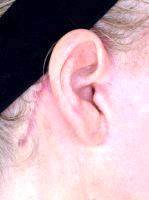
In Office Facelift Give Great Improvement In Skin Laxity
Minor lifts that do not involve the neck can, in my opinion, safely be done in an outpatient setting. (Brooke R. Seckel, MD, FACS, Boston Plastic Surgeon)
In Australia this would most commonly be done in an accredited hospital as a 1 night stay. (Damien Grinsell, MBBS, FRACS (Plas), Melbourne Plastic Surgeon)
Location for facelift surgery
The location will vary depending on your surgeons preference and anesthesia preference. As you can see from all the comments, it really does not make a difference how you go about doing the surgery- suffice to say, overall risks are higher with deeper levels of sedation, as you are adding anesthesia risks to the procedure.
Find someone with lots of experience and an excellent safety records and you will be fine. (Dilip D. Madnani, MD, FACS, New York Facial Plastic Surgeon)

In-Office Facelifts Typically Start At $3,000
Facelift in Office or Hospital/Clinic?
All of these choices are appropriate. If the work is done in an office or clinic make sure that it is in a surgery center which is licensed and accredited in those facilities. (Richard W. Fleming, MD, Beverly Hills Facial Plastic Surgeon)
Facelift…where to have it done ?
Depending on where you live, cosmetic surgery should only be performed in certified office operating room, outpatient surgery center or hospital. Factors that influence the decision relate to your general health. The bottom line for all surgeons is patient safety and a surgeon can not justify putting you at risk, even if he has a certified office operating room.
Other factors are general cost, which may be considerably higher in a hospital. Before having office surgery, ask the surgeon if the facility is certified, and what type of anesthesia is administered and by whom. (Don Fontana, MD, Waldorf Plastic Surgeon)
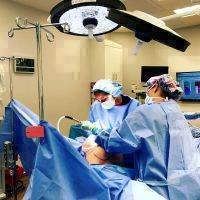
Not All Patients Are Candidates For In-office Facelift
A facelift should always be performed a surgical center, not in a clinic. That surgical center should be certified and licensed, and can be located adjacent to a physician’s office or hospital. In addition, board-certified physician anesthesiologists are the most qualified to perform anesthesia in the outpatient surgical setting.
Look for a surgeon who can give you a very natural result in a is safe, private and comfortable environment. (William Portuese, MD, Seattle Facial Plastic Surgeon)
The location of the surgery does not matter as long as the facility is fully accredited. If not, there are significant risks that you would be taking. Also, make sure that whomever is doing the procedure is fully board certified by an American Board of Medical Specialists board such as the American Board of Plastic Surgery.
The latter requires all their diplomats to operate in only accredited facilities. You did not explain what you meant by a “full Facelift.” If this includes eyes and/or brow, I would highly recommend staying overnight.
I usually encourage people having just the face and neck (a simple facelift) to stay overnight also. This is definitely the safest, and you are back to almost normal by the time you are dischargeged. (Robert T. Buchanan, MD, Highlands Plastic Surgeon)
Hospital vs. surgical center/office
Most people undergoing cosmetic procedures, including facelift surgery, are healthy with limited co-morbidities. For this reason it is usually unnecessary to have your surgery performed in a hospital where more acute and specialized care is available.
As long as the office is fully accredited (AAAASF, AAAHC, etc.) you should be fine in that setting. However, if your surgeon does his surgeries at a hospital, that is fine, too. It is more important to find a surgeon with whom you trust to do a good job. (Mark Been, MD, Barrington Facial Plastic Surgeon)

Rhytidectomy In Office Before And After
A facelift can be performed in either a hospital or outpatient surgery center. From my point of view, both locations can be excellent choices to undergo the surgery. Generally speaking, a facelift will be performed in an outpatient surgery center because most patients go home after surgery.
There are indications where I will only do a facelift in a hospital setting.
These indications are:
- When the time of surgery is over seven hours
- When a patient has a medical condition where I feel it would be safer to do in the hospital
- When a patient does not have a good home situation and I believe they would be better cared for by a nurse in the hospital for a night
In choosing to undergo a facelift, the most important decision is who you choose to perform your surgery. (Jonathan Kulbersh, MD, Charlotte Facial Plastic Surgeon)

Rhytidectomy In Operating Room Before And After
Face lift in office or hospital/clinic?
For a facelift you typically have general anesthesia and have the procedure in the operating room. The operating rom can be in an office or at the hospital or clinic. Outpatient centers are typically used.
Some minor facelifts can be done with local and sedation and can be done in the office, but it sound like you are looking at something a little more involved. I recommend finding a surgeon you trust and feel comfortable with and asking what setting they recommend. (Myriam Loyo, MD, Portland Facial Plastic Surgeon)
Facelifts are done in all three of those locations. In general, the hospital is reserved for patients with more medical problems or if another facility is not available.
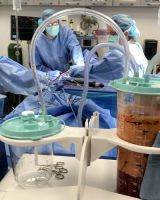
Stem Cell Facelift Operating Room
It offers the most health care professionals on the off chance something were to happen but it will be the most expensive option. A surgical center will be more affordable and does have other health care providers available but it won’t have available everything you could find in a hospital.
This is where the majority of facelifts are done. There are surgeons who have their own surgical suites in the office. This offers the greatest convenience and usually the best facility price for you. If any type of anesthesia is used under than local anesthesia then the surgical suite is required to be accredited.
It is important to realize that this location has the least resources available if something were to go wrong but that is very rare, otherwise no one would be operating there. The other consideration is the type of anesthesia used.
There are surgeons who will do the entire procedure with nothing but local anesthesia. This could easily be performed in the office with minimal risk. The next option is monitored anesthesia care or MAC/twilight anesthesia where it is like a colonoscopy.
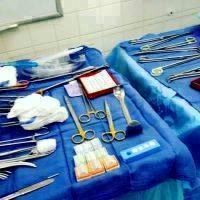
Surgical Instruments In Operating Room
You receive sedation but you are not under general anesthesia. The last option is general anesthesia where you are completely asleep with a machine breathing for you. As you go towards the latter it is safer to be in a higher level of care such as ambulatory surgical center or a hospital.
I would discuss all of your concerns with your surgeon to determine the best location for the operation. (William Marshall Guy, MD, The Woodlands Facial Plastic Surgeon)
Facelift and operating facility
Part of the process of selecting a plastic surgeon is asking about anesthesia, operating facilities and accreditation. The surgeon should be board certified and a member of ASAPS/ASPS ideally. The operating facility should be accredited such as AAAASF or JHACO and the anesthesia administered by CRNA or an anesthesiologist.

The Mini-facelift Allows For Less Recovery Time
These are the bare minimums you should look at. Then get a feel for the safety culture of the surgeon and office. Get a measure of experience and comfort level of the surgeon performing the procedure.
Some cases are best done at the hospital and some cases are best done not at all. I am sure you are in good hands and you are wise to ask this question. Ultimately, you will place yourself in the hands of the plastic surgeon and trust his skill and judgement in where best to perform your facelift. (Paul Watterson, MD, Charlotte Plastic Surgeon)
Facelift in a hospital or clinic
Safety is of paramount importance in surgery of all kinds and just because it is cosmetic does not mean that it is sensible to cut corners when it comes to anesthesia or the facility that the surgery is performed.

The Mini-facelift Is Done Under Local Anesthesia
Make sure that the person giving the anesthetic is a fully trained and accredited anesthetist and definitely not the surgeon who is doing the operation. You will, of course, have chosen the surgeon carefully based on recommendations, results, experience and reputation and if they truly are worth their salt they will have a well trained team of staff that they regularly work with in a fully accredited operating facility.
This may be a hospital or possibly an office based facility but check the credentialling first. A good result from surgery comes from a combination of a well planned operation skillfully performed addressing the right reasons and indications and performed with minimal risk to the patient.
The surgeon may be the captain of the ship but if the hull is leaky and the crew unreliable then the journey can be treacherous! (Matthew Hansen, MBBS, FRACS, Perth Plastic Surgeon)
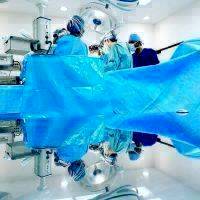
Traditional Facelift Takes About Three To Four Hours
The procedure should be done in a fully licensed ambulatory surgery center. Generally one’s affiliated with a doctors office would be better economically. Just make sure it is licensed. (Robert Brueck, MD, Fort Myers Plastic Surgeon)
FaceLift surgery is preformed in all 3 settings: office surgery suite, ASC, Hospital ORs. The costs increases in that order. The risks are equal in general terms. If over night is needed than the hospital setting better but the OR staff might not be used to the surgeon’s techniques thus increase in OR time. (Darryl J. Blinski, MD, Miami Plastic Surgeon)
Hospital vs outpatient OR vs office
There are three main factors in choosing a location – your health/risk factors, preference (both yours and the surgeons), and cost. The hospital provides a safety net for patients with a higher risk of heart and lung problems, and you can stay overnight if needed.
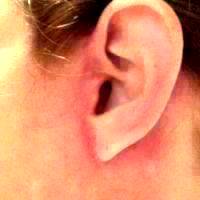
Where Are Facelift Scars Photo
This may help patients with high blood pressure or breathing problems minimize complications immediately after surgery. If you are healthy, then staying out of the hospital can minimize your exposure to certain types of bacteria and offer convenience and usually cost savings as well.
Ultimately, your safety and comfort are priority number one, so make sure you feel safe with what your surgeon offers. (Dana Goldberg, MD, Jupiter Plastic Surgeon)
Actually facelifts and a number of other aesthetic surgical procedures are very easily and safely performed in the office setting as long as the office is an Accredited Surgical Center.
This would also require that the surgeon is Board Certified. Many surgeons offer the procedure under local anesthesia with sedation (“twilight anesthesia”) whereas some prefer to use general anesthesia. Please make sure your surgeon is Board Certified and the office is an accredited surgery center before proceeding with this most important surgery. (John J. Obi, MD, Jacksonville Plastic Surgeon)

Local Anesthesia Lowers The Risks Of The Surgery Considerably
Where are face lifts done
Face lifts should be done in an accredited surgery center. These may be part of a surgeon’s office, a free standing surgery center or a hospital surgery center.
For safety and good results, general anesthesia is usually used. An anesthesiologist should be supervising the anesthesia in most cases although CRNAs are also used. Find a plastic surgeon whom you feel you can trust to take good care of you. Always see a Board Certified Plastic Surgeon. (Elizabeth Morgan, MD, PhD, Atlanta Plastic Surgeon)
One thing should be made clear: facelift under local anesthesia is not safer than under sedation. This has never been statistically proven and it is not the majority opinion among Facial Plastic Surgeons and Plastic Surgeons who perform a large number of facelifts.
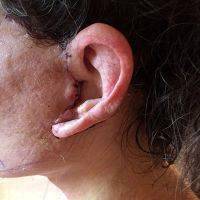
Minimal Down Time And Bruising
In fact, this was one of the marketing tools of Lifestyle Lift that many of us disagreed with. The majority of the patient population I see prefer not to be involved with the actual procedure.
When sedation is given, it should be administered by a CRNA or Anesthesiologist in an accredited outpatient surgical facility. Accreditation means that an outside body such as the AAAASF or AAAHC visit the site, review all medications, equipment, protocols, and personnel to help maintain a baseline level of patient safety.
Can a facelift be performed in a hospital? It can, but is generally prohibitively expensive and does pose a higher infection risk. If you have questions about the quality of a Surgeon’s facility, ask to see it, and ask to meet with the CRNA or Anesthesiologist. (Stephen Prendiville, MD, Fort Myers Facial Plastic Surgeon)
Facelifts can be performed in either the hospital or the office setting. Any facelift that is performed under general anesthesia must be performed in a hospital or accredited surgery center since an anesthesiologist is required.
Facelifts performed under oral sedation or IV sedation should be performed in either a hospital, accredited surgery center, or an office that has been accredited for office based surgical procedures. Facelifts performed under strict local anesthesia ( without oral “cocktail” -oral sedation, or IV sedation) could be performed in the office if the patients are candidates as per surgeon’s evaluation.
Patients interested in determining ind entail the advantages and disadvantages of undergoing a facelift in the hospital vs office setting should make a consultation with a Board Certified Plastic Surgeon specialized in facelifts. (John Mesa, MD, New York Plastic Surgeon)

The Mini-facelift And The Traditional Face Lift Have Incisions Made In Similar Area
Surgery: Office vs. Hospital
In my opinion a fully-accredited in-office operating suite is preferable in nearly every respect — patient convenience, surgeon convenience, staffing, supplies, cost-effectiveness for the patient, etc. I do nearly all of my facelifts in the office.
If the patient is healthy that’s the way to go. If there are any concerns about the patient safety as it pertains to surgery in an office setting, that patient should definitely go to a hospital or a surgery center where critical care personnel are close by if needed.
Some surgeons simply don’t have an OR available to them in their office, so they take all of their cases to a surgery center or hospital. (Harry V. Wright, MD, Sarasota Facial Plastic Surgeon)
I do all my facelifts in the office. In my opinion it is superior in every aspect. The office is designed exclusively for facial plastic surgery and bespoke equipped and fitted. Staff are dedicated and experienced and there is absolute control on stocking, timetableing and patient pathway.
It is a no brainer. Hospitals are for sick people.. (Dominic Bray, MBBS, FRCS, London Facial Plastic Surgeon)
Is a facelift done in a hospital, in the office or a surgery center?
It really depends on the surgeons, their training and comfort level. I do 95% of my facelifts under local anesthesia with moderate sedation with a special nurse monitor, in a fully accredited operating room, in a surgery center or the hospital out patient operating room.
I could do the surgery in the office, but because it usually takes about three hours, I prefer to be in an environment where there is ample help available in case there were to be any problems.
I believe this is the safest way for the patient and safety is the most important consideration when it comes to cosmetic surgery in general. (Farhad Rafizadeh, MD, Morristown Plastic Surgeon)
I would caution not to try to get a “bargain” because it is done in the wrong setting or without anesthesia. Also make sure your surgeon has privileges to perform a facelift at a local hospital and is board certified by the American Board of Plastic Surgery or Facial Surgery. (Michael Hueneke, MD, Nashville Plastic Surgeon)
Surgical location for facelift
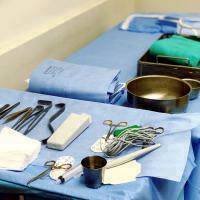
Operating Room Suite
A facelift can be done in a number of different types of facilities, either as an outpatient or inpatient. If patients live close by they will frequently choose to have it done as an outpatient.
However if they are coming from out of town or have any type of medical issue our patients will spend the night. For over a decade we have noticed a trend towards patients wanting to spend the night even though they otherwise could go home.
We have developed a special postop program for our patients so that they have a private room and nursing and help the first night- which they love . Also if they spend the night I see the patients there the next morning -therefore they don’t have to come in to the office for the dressing change.
This really has been successful as it takes a lot of pressure off the husband/friend/spouse. (G. Wesley Price, MD, Chevy Chase Plastic Surgeon)
Safety of facelifts
Full facelifts can be done either in hospitals, ambulatory surgical centers, or nationally certified in office operating suites such as those sanctioned by the AAAASF. For board-certified plastic surgeons who are members of the American Society for Aesthetic Plastic Surgery, all plastic surgery procedures requiring anything more than a local anesthetic are performed in state or nationally certified surgical centers.
It’s been well-established that the safety of ambulatory, surgicall centers or in office AAAASF surgical suites are equivalent. The advantage of an office based surgical center is privacy, convenience, and the concept of a one stop shop where most of the faces are familiar.
Sometimes, the cost can be better controlled in office based setting. (Marc J. Salzman, MD, FACS, Louisville Plastic Surgeon)
Where should a facelift be done?
A facelift can be done in a hospital, in an outpatient surgery center, or in the office. The primary determining factor is your health. Patients with multiple medical problems need to be done in the outpatient surgicenter setting or at a hospital.
Patients wwith serious medical problems (prior heart attack, etc) should only be done in a hospital setting, and require clearance from the anesthesiologist. Motivated patients who are healthy can have their procedures done in the office.
However, these patients should be given the opportunity to have their procedure in a setting with a higher level of care. The type of anesthesia should also match the setting. We offer only local anesthesia with oral sedation in the office.
Depending on the office, and the equipment at the surgeon’s disposal, some practices may offer IV sedation in the office setting. Adequate emergency equipment, etc is necessary in such cases. (Raghu Athre, MD, Houston Facial Plastic Surgeon)
Facelift under Local Anesthesia
and thank you for reaching out to the RS physician community. Facelifts can be performed under general anesthesia, IV sedation, or under local anesthesia (with oral sedation). The safest route (and most cost effective) is to have it performed under local anesthesia in your surgeon’s Center.
This method has been proven over the past decade to be arguably the best approach. That said, what is more important is to find the surgeon who you feel will do the best work for you.
If your PS prefers to perform the procedure in a hospital setting, then do it that way. You want your PS to perform your procedure in the setting where he/she is most comfortable.
(Paul Lanfranchi, DO, FAOCO, Las Vegas Facial Plastic Surgeon)
Facelifts can be done in hospitals, outpatient surgery centers, or doctor’s offices. If you are healthy without any medical problems or only minor conditions, it is perfectly safe to undergo the procedure in an outpatient setting like a surgery center or office.
Benefits of office and outpatient surgery centers are less cost and more personalized care without sacrificing safety or quality. Hospital settings are more impersonal and their anesthesiologists may have less experience with aesthetic procedures and their anesthetic needs. (John Michael Thomassen, MD, Fort Lauderdale Plastic Surgeon)
